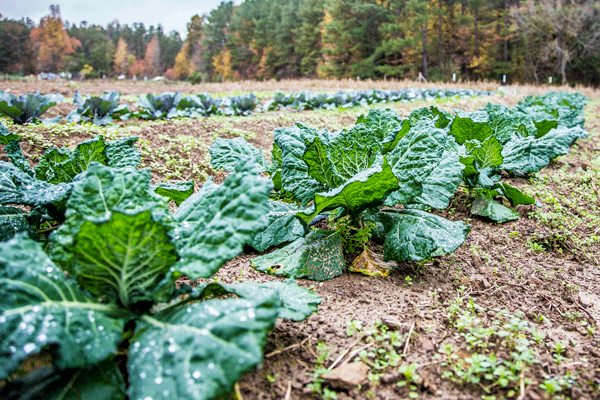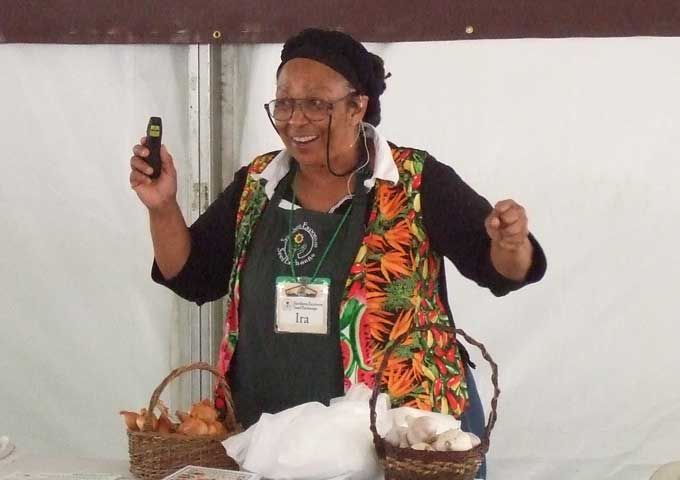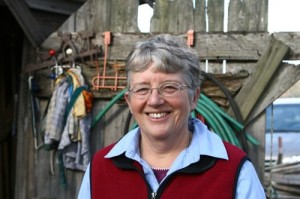by Stephen Nix, CFSA’s SC Food Systems Coordinator

Believe it or not, colder weather is right around (almost) the corner. Most of us have experienced temperatures in the 90s (if not higher) for at least the last month, but August is here and the official ‘dog days’ of summer are upon us. August marks the time when many farmers begin transitioning to fall crops and while the cooler weather will become a welcome respite from this summer’s heat, the last thing on our minds right now is the cold(er) winter ahead. However, it is never too early to start planning for cold-hardy crops and overwintering to provide a continuous supply of fresh vegetables throughout winter and to get an early start next spring.
When planning to grow throughout the winter, important information to consider is the date of your first frost, your daily average minimum temperature, and the number of daylight hours per day in your area. While some folks in the mountain regions live in USDA Plant Hardiness Zones 6 and others along the coast live in Zone 9, most of us in the Carolinas live in Zone 7 or 8, and will see minimum temperatures range from 10 – 20°F (-12 – -8°C).

Ira Wallace, author of The Timber Press Guide to Vegetable Gardening in the Southeast, recommends considering the following fall cool-season crops for our area: Asian greens, beets, Brussels sprouts, bunching onions, carrots, fava beans, kale, broccoli, cabbage, kohlrabi, cauliflower, rutabaga, turnips, leeks, collards, arugula, turnip greens, spinach, and Swiss chard. Many varieties of these vegetables are available and it’s important to select ones suited for cold-hardiness and your area.

Pam Dawling, the author of Sustainable Market Farming, the farm manager at Twin Oaks Community in central Virginia (Zone 7), and contributing editor at Growing for Market magazine uses three categories for separating winter vegetables: fast growers that mature before cold weather sets in, vegetables you can harvest all winter long, and crops that sit dormant in the ground waiting for the first signs of spring.
For calculating sowing dates for the fast-growing crops, those that mature in 60 days or less, Pam devised the following equation:
- Number of days from planting in the field to harvest, plus
- Number of days from seeding to transplant (if growing your own), plus
- Average number of days in the harvest period, plus
- 14 days to account for slower growing conditions seen in the fall (can be reduced if using row cover), plus
- A 14-day ‘safety margin’ from the expected first killing temperature for that crop, equals
- Days before the first expected killing temperatures to start seeds for that crop.
Crops require a minimum of 10 hours of daylight (and three hours of direct sunlight for proper photosynthesis) each day to continue growing. This period of inadequate daylight generally occurs between November 30 and January 11 here in the Upstate. Similarly speaking, little plant growth happens when the daily average temperature drops much below 40°F (4°C), which for me was a handful of days in January and February this past winter.
- Track how much daylight you can expect for your area.
- Useful weather data (min/max and average temperatures, precipitation, etc.) for your area can be found on Weather Underground.
Knowing this information is helpful when planning the crops you want to harvest all winter. I like fresh spinach and know that in my area, if picked in December and January, it’s probably not going to regrow. Therefore, I need to increase my bed or row area planted by the amount I intend to pick in those months. Longtime CFSA member, Dr. David Bradshaw, produces carrots this way by growing them through the fall, storing them in the ground, and harvesting as needed during this period of photosynthetic ‘dearth.’
Certain crops (e.g. spinach, kale, some Asian greens, collards) can be kept alive through the winter and will produce early harvests before new crops have a chance to establish. Maintain proper moisture and protect these crops from the wind, which can dry plant tissues and kill crops, even when temperatures do not pose a real threat.
Some vegetables are cold-hardy, but require 100 or more days to mature from seed. This window of days can extend with decreasing daylight hours and cool temperatures. A good example is Brussels sprouts. Here in the Upstate of SC (Zone 7b), Brussels sprouts generally need to be planted by mid-July in order to produce harvestable sprouts in the fall.
And remember, if you already use a high tunnel, but would like assistance getting the most out of its production that you can contact CFSA’s Organic Research Coordinator, Gena Moore, to see if high tunnel consulting is right for you—it’s free for members!


